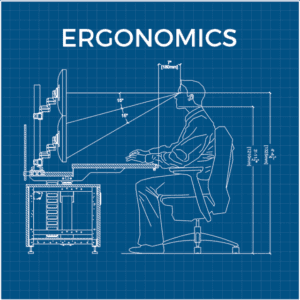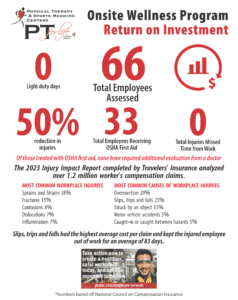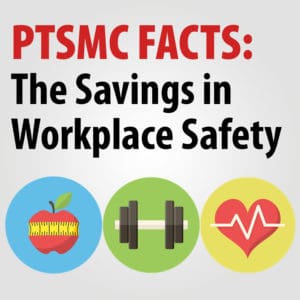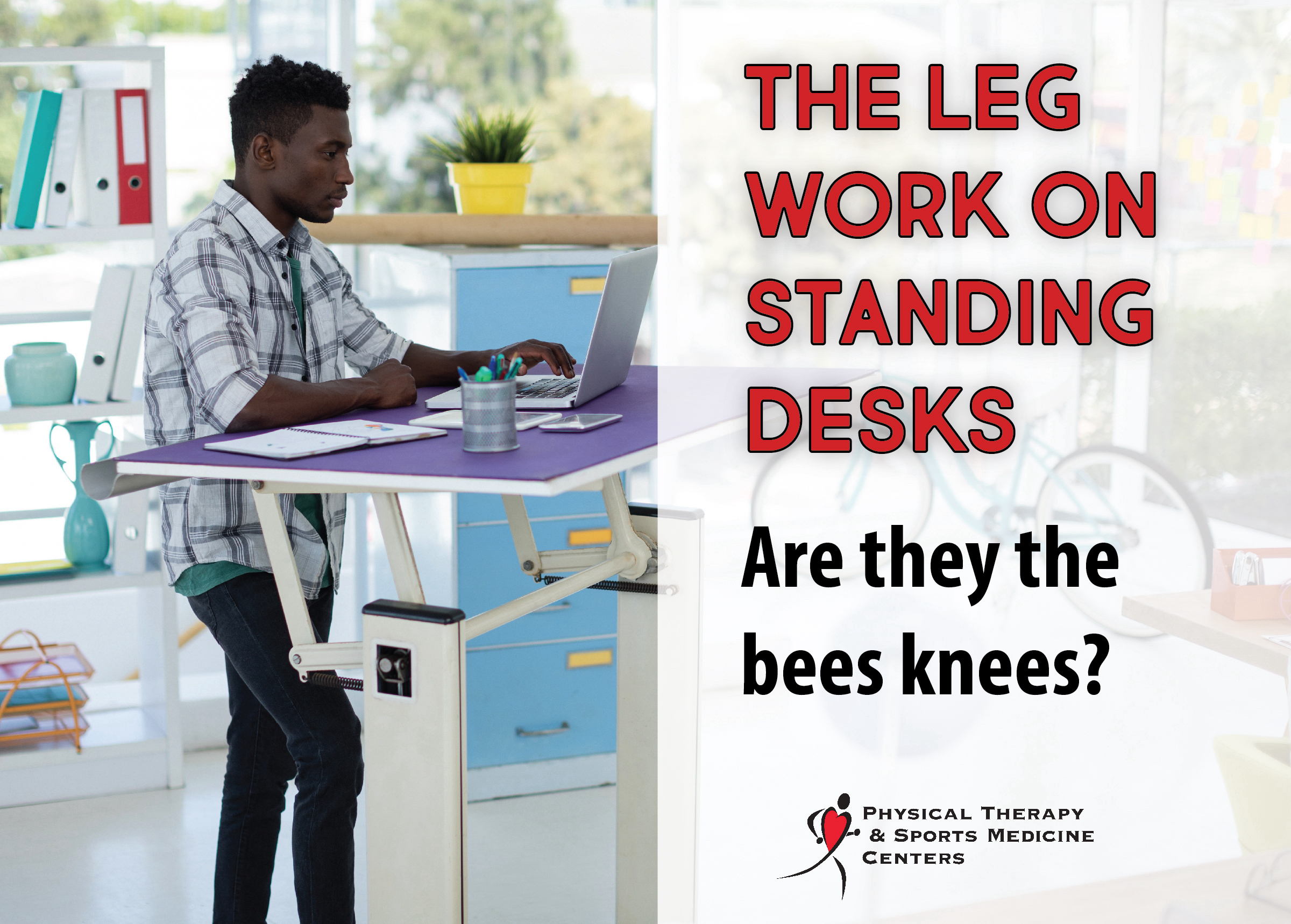

PTSMC’s Employer Services
Employer Services offers expert consultation aimed at advising you and your employees on the most effective ways to prevent and treat injury in the workplace.
Injuries are a concern for any business.
Injuries to employees are sometimes inevitable, but often avoidable. They can cause pain and suffering for your workers and can also be a significant expense effecting your bottom-line. The good news is that there are a number of things you can do to be proactive in injury prevention, which can create a healthier, safer work environment while saving you money in the cost of treatment and rehabilitation.


The goal of PTSMC’s Employer Services is to help you prevent and treat injuries, resulting in:
-
Healthier Workplace
-
Fewer Missed Workdays
-
Fewer Recordable Injuries
-
Significant Cost Savings
Consultation Services:
Ergonomics Analysis


Athletic trainers assess and train your employees on proper workstation set up and posture.
- Analysis for safer, more comfortable workspaces
- Tips to prevent employee discomfort and injury
- Tips to avoid/correct hazards in the workplace
- Employee training on biomechanics (proper posture & movement)
On-site Treatment


Address injuries before they become OSHA recordable with an on-site healthcare professional ready to provide an evaluation and initial treatment measures.
- Treat minor injuries before they become major problems
- Provide fast on-site care for better employee safety
- Potentially save $5,000+ per recordable injury
- Increase productivity by keeping employees healthy
Job Stressor Analysis


On-site evaluations of essential job demands to determine root causes of work-related injuries, including full summary and report.
- Expert analysis on causes of work-related injury
- Prevent recurring employee aches and injuries
- Receive a full stressor report with corrective suggestions
Employee Conditioning Program


Customized group and individual stretching and strengthening programs led by professionals focused on injury prevention.
- Custom stretching/strengthening programs tailored to your industry demands
- Employee training in nutrition and posture
- Expert-led sessions focused on injury prevention
- Tips for avoiding common aches and pain





